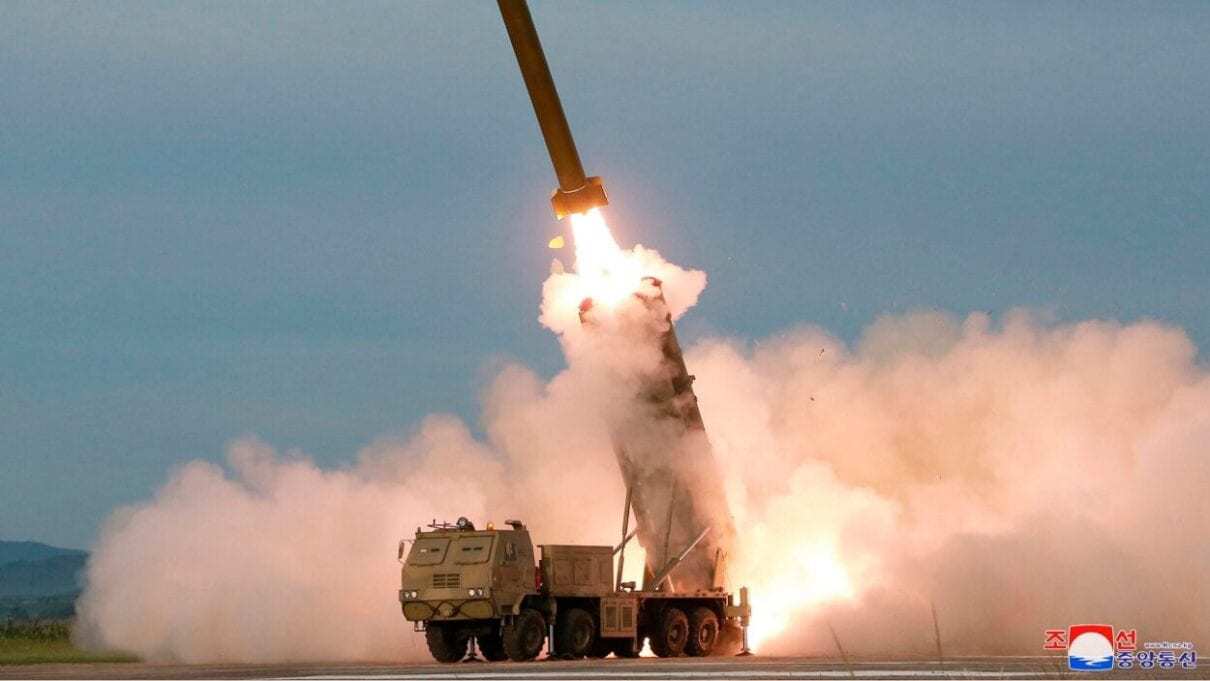On September 11 and 12, North Korea successfully tested a new long-range cruise missile — yet another signal of the regime’s unabated expansion of its missile and nuclear threats to U.S. forces and allies in northeast Asia.
The new cruise missile has the range to threaten Japan and would augment North Korea’s ballistic missile arsenal intended to intimidate Tokyo from assisting the United States during a Korean conflict. The missile could also be used against South Korean targets or potentially U.S. naval forces near the Korean Peninsula.
The cruise missile launches are not technically a violation of UN resolutions, which only preclude ballistic missile tests. But they will nonetheless pose a challenge to the Biden administration as it seeks to curtail North Korea’s nuclear and missile growing threats. To date, Pyongyang has rejected all efforts at dialogue or negotiations. Washington should coordinate with Seoul and Tokyo to improve comprehensive allied missile defenses, and to ensure sufficient offensive capabilities to reduce the number of North Korean missiles that are launched.
The Cruise Missile Challenge
North Korean official media declared that the cruise missile flew on a figure-eight pattern to a range of 1500 km (930 miles) and is a “strategic weapon” — usually a reference to being nuclear-capable. The missile had been in development for two years, including “dozens of static firing tests of motor, different flight tests, controlling and guiding test and warhead destructive tests.” South Korea previously announced North Korea conducted cruise missile tests in March 2021, July 2020 and April 2020, which may have been related to the new cruise missile.
Cruise missiles fly lower than ballistic missiles to evade missile-defense radars. Pyongyang has also recently developed short-range ballistic missiles that are maneuverable during flight to evade missile-defense interceptors.
North Korea’s Missiles: An Evolving Threat
After assuming power in 2011, Kim Jong-un oversaw an expansive diversification of North Korea’s arsenal and accelerated nuclear and missile testing. Pyongyang expanded and refined manufacturing facilities for fissile material, nuclear weapons, missiles, mobile missile launchers, and reentry vehicles. New weapons overcame the shortcomings of their predecessors and now pose a far greater threat to allied forces, including missile-defense systems.
After North Korean successfully tested ICBMs and a hydrogen bomb in 2017, Kim Jong-un directed his military to mass-produce nuclear warheads and ballistic missiles. In 2019, the regime unveiled five new missile systems as it conducted 26 missile launches, a new annual record — all of which were violations of UN resolutions.
During its October 2020 and January 2021 parades, North Korea revealed yet more missiles systems, including a massive ICBM with multiple nuclear warheads and several versions of submarine-launched ballistic missiles.
In January 2021, Kim Jong-un announced North Korea had developed an intermediate-range cruise missile “whose conventional warheads are the most powerful in the world” and charged his scientists to make nuclear weapons smaller and lighter. Kim also called for developing hypersonic gliding flight warheads, a nuclear-powered submarine and an underwater-launch nuclear strategic weapon.
Just last month, the International Atomic Energy Agency assessed that North Korea resumed operations at its Yongbyon reactor, which produces plutonium for nuclear weapons. Pyongyang also may have reprocessed nuclear fuel from previous reactor operations. In 2017, the U.S. intelligence community assessed that North Korea had between 30 and 60 nuclear weapons (or weapons’ worth of fissile material) and could annually produce an additional seven to 12 weapons. While the Yongbyon reactor was offline during 2019-21, production would have decreased; however, resumed reactor operations will presumably return nuclear production to 2017-2018 levels.
How To Respond?
North Korea’s development of additional means to threaten Japan could invigorate debate about whether Tokyo should augment its defenses by acquiring the ability to conduct an attack against targets in an opponent’s country. The issue had languished after the resignation last year of Prime Minister Shinzo Abe, who had been a proponent of Japan expanding its security role in the Indo-Pacific. Abe’s successor Yoshihide Suga deferred a decision on Japan developing strike capabilities, but the issue could arise during the forthcoming prime minister elections.
North Korea’s nuclear, missile, and conventional forces are a formidable threat to the United States and its allies in northeast Asia. Pyongyang’s history of provocation and intimidation is a consistent indicator of the regime’s intent to achieve its political objectives through the threat or execution of force.
The Biden administration should continue diplomatic efforts at a negotiated reduction of the North Korean nuclear and missile threats. However, the United States and its allies should concurrently implement measures to enhance their deterrence and defense capabilities. Diplomacy and deterrence are not mutually exclusive.
To reassure its allies, the United States should reaffirm its extended deterrence guarantee to use all necessary force, including nuclear weapons, in response to a North Korean attack. Washington should also pledge to maintain current levels of U.S. forces in the region until the North Korean nuclear, missile, and conventional force threats have been sufficiently reduced.
North Korea has so far refrained from the large-scale provocations it historically did in the first year of a new U.S. or South Korean administration. But it appears only a matter of time before Pyongyang conducts another ICBM launch or nuclear test. Either would severely test U.S. leadership in the region.
A former CIA deputy division chief for Korea, Bruce Klingner is a senior research fellow in The Heritage Foundation’s Asian Studies Center.

